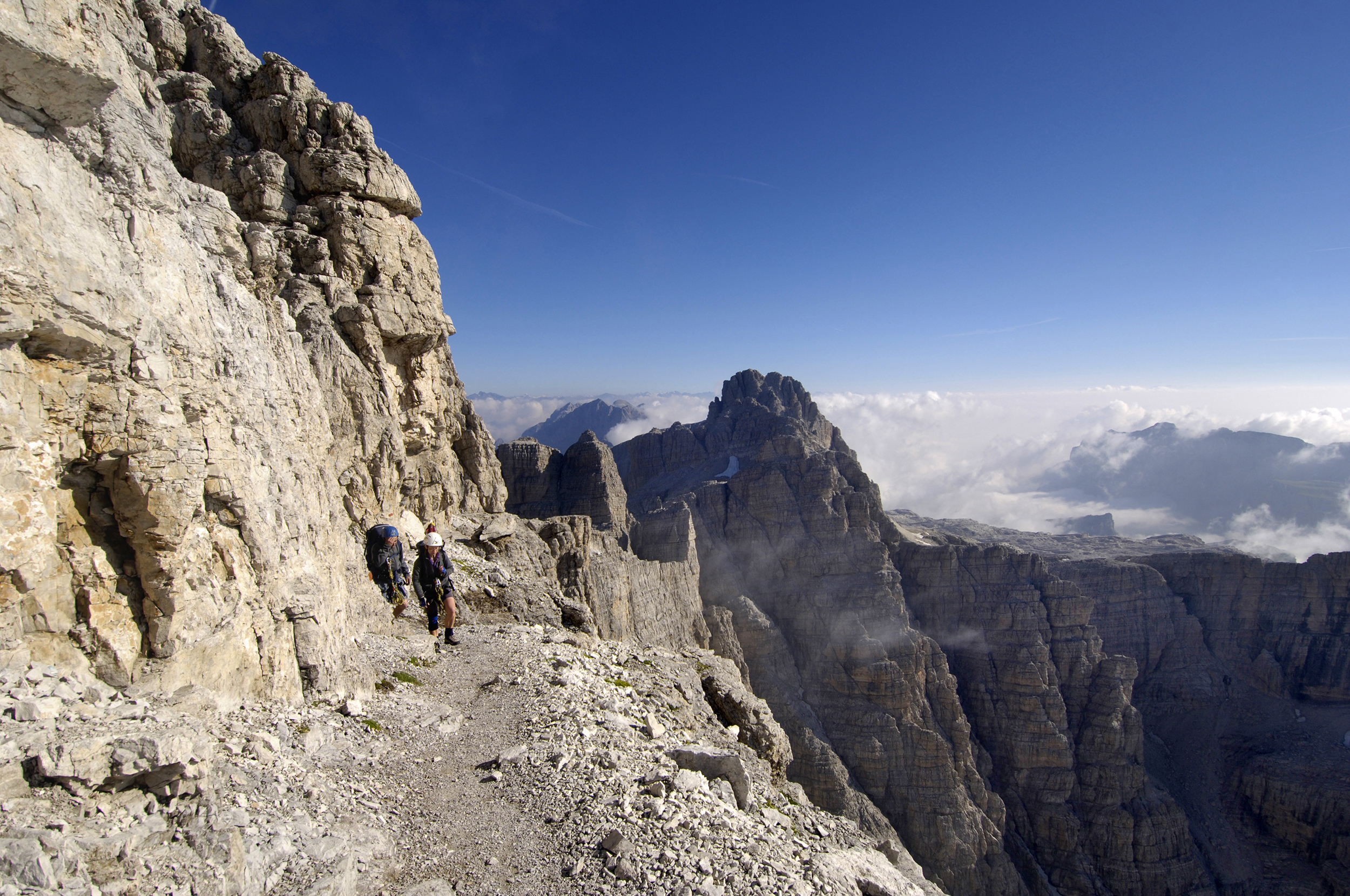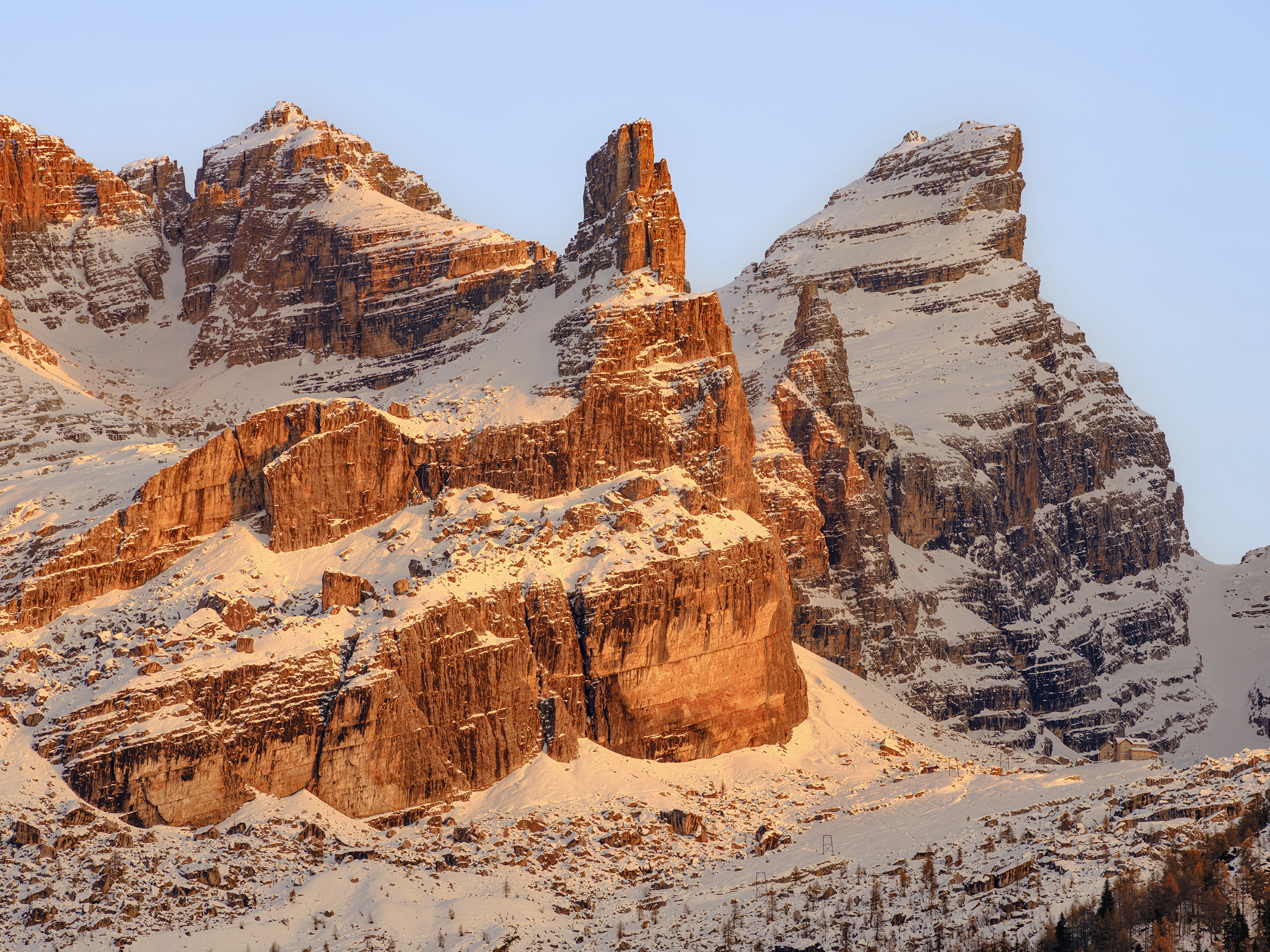The permafrost in the Italian Dolomites is melting, causing unpredictable, dangerous rockslides and leading to the evacuation of hundreds of hikers, and there's no sign of it stopping
Thawing ice on Cima Falkner has caused rockfalls on the mountain, leading authorities to close dozens of now unsafe trails

Hikers and climbers in the Italian Dolomites have been told to stay off Cima Falkner after a series of rockfalls on its western and eastern sides. Popular trails on and surrounding the mountain have been closed as investigators work to assess their safety.
“All hikers in the area have been evacuated. We urge everyone to pay maximum attention and strictly follow the ordinances to ensure their own safety," warned officials from the local Trentino-Alto Adige council.

The mountain is currently going through permafrost degradation, meaning that ground that usually stays frozen all year round is thawing, allowing rocks to become loose and tumble down the mountain. This phenomenon has caused the summit to open "like a flower," according to the council.
“The fractures, previously filled with ice, are now partially empty, indicating a change in the morphology of Cima Falkner,” it explained.
Although it's difficult to link single events to climate change, scientists have previously warned that increasingly extreme heat can melt the vital ice that holds otherwise unstable mountain rocks in place.
The Scientific Committee of the Italian Alpine Club told La Repubblica: "Landslides are on the rise, and the main cause is the climate crisis. There’s no doubt about it.
"Mountains, by definition, are destined to collapse, they won’t remain as we know them forever. What’s different now is that we’re seeing a clear acceleration of these processes, driven by heat and extreme weather events intensified by the climate crisis," it continued.
All the latest inspiration, tips and guides to help you plan your next Advnture!
The local council says that Cima Falkner has already shed over 12,360,13 cubic ft (35,000m3) of rock and could lose upwards of 24,72027 cubic ft (70,000ft3) before the rockfalls stop.
Rockfall safety
Despite their dangers, rockfalls are relatively uncommon on hiking trails. Even so, it's important to be prepared, so check out some of our top tips to keep yourself safe from falling rocks in the mountains.
- Stick to proper paths - Established trails are more likely to be well-maintained, and offer better stability than untamed wilderness sections.
- Check the weather - Heavy rain and strong winds increase the likelihood of rockfalls, especially in steep or wild sections, so make sure to check the weather ahead of time and prepare accordingly.
- Heed warnings - Local mountain authorities will publish rockfall warnings if incidents are likely or have been reported. You should check ahead of time and take any warnings seriously before embarking on a trek.
- Don't go alone - Hiking with a friend or in a group is a great way to stay safe in the mountains, as they can call for help in an emergency situations, including rockfalls.
For more top tips, check out our expert rockslides safety guide.
- The best lightweight hiking boots and shoes: pick up speed on the trails and stay agile on your scrambles
- The best first aid kits: be prepared for accidents and emergencies

Will Symons developed his love of the outdoors as a student, exploring every inch of Sussex’s South Downs national park and swimming off the Brighton seafront. Now a staff writer for Advnture, Will previously worked as a freelance journalist and writer, covering everything from cricket to ancient history. Like most Advnture staff, Will’s free time is rarely spent indoors, he can often be found hiking, open water swimming or playing cricket.
